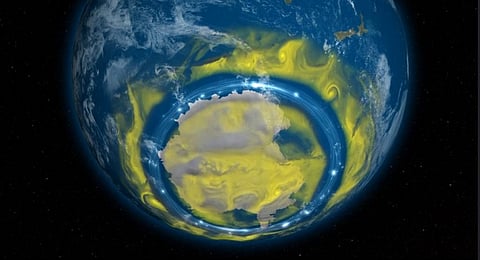

In a first, scientists at National Aeronautics and Space Administration (NASA) have shown through direct satellite observations that the levels of ozone-destroying chlorine are declining, thus, reducing the extent of ozone depletion. The scientists, based on the measurements from NASA's Aura satellite, studied the chlorine concentration within the Antarctic ozone hole over the last several years.
Going by the measurements, there has been about 20 per cent less ozone depletion during the Antarctic winter as compared to 2005, mainly due to the decline in chlorine. Under the Montreal Protocol, production and use of chlorine-containing man-made chemicals called chlorofluorocarbons (CFCs) was banned in most of the countries since 2010. CFCs remain in the atmosphere for a long time and they eventually rise into the stratosphere, where they release chlorine atoms that destroy ozone molecules.
“We see very clearly that chlorine from CFCs is going down in the ozone hole, and that less ozone depletion is occurring because of it,” said Susan Strahan, an atmospheric scientist from NASA’s Goddard Space Flight Center in Greenbelt, Maryland. She is the lead author of the study first published on January 4 in the journal Geophysical Research Letters.
NASA’s satellite made daily measurement of the change in ozone levels above Antarctica from the beginning to the end of southern winter—early July to mid-September—every year from 2005 to 2016. The scientists measured the ozone loss during the southern winter because that is the time when Antarctic temperatures are always very low, and the rate of ozone destruction depends mostly on how much chlorine there is.
While previous studies had argued that ozone depletion is decreasing, their claims were based on statistical analyses of changes in the ozone hole’s size. This study by the NASA is the first to use measurements of the chemical composition inside the ozone hole to confirm that ozone depletion is decreasing and it is caused by the decline in CFCs.
Although the Antarctic ozone hole is recovering gradually, it will take decades for it to recover completely. “CFCs have lifetimes from 50 to 100 years, so they linger in the atmosphere for a very long time,” said Anne Douglass, atmospheric scientist at Goddard and the co-author of the study.